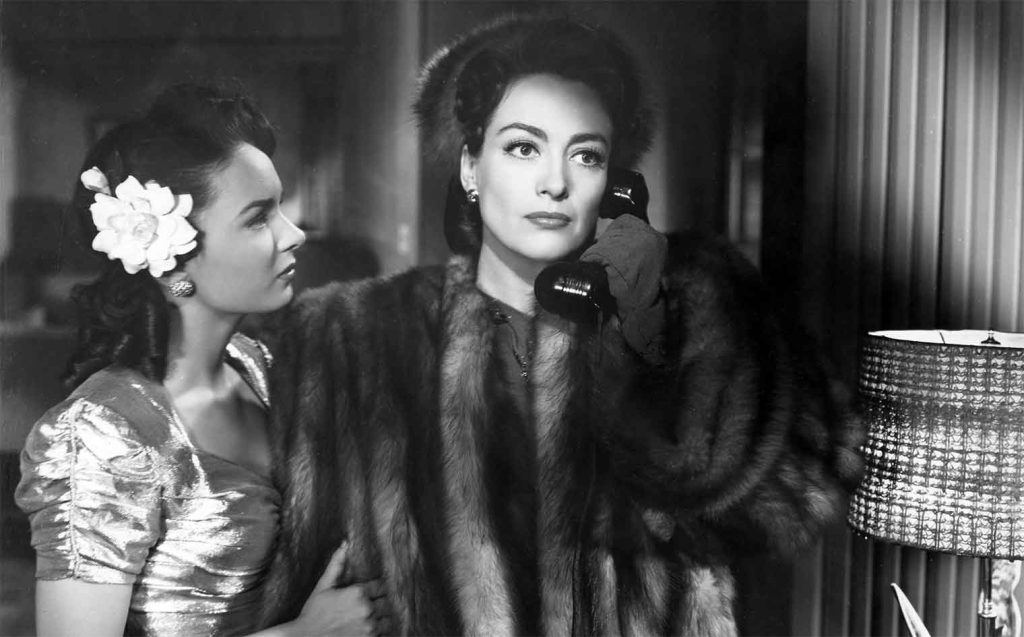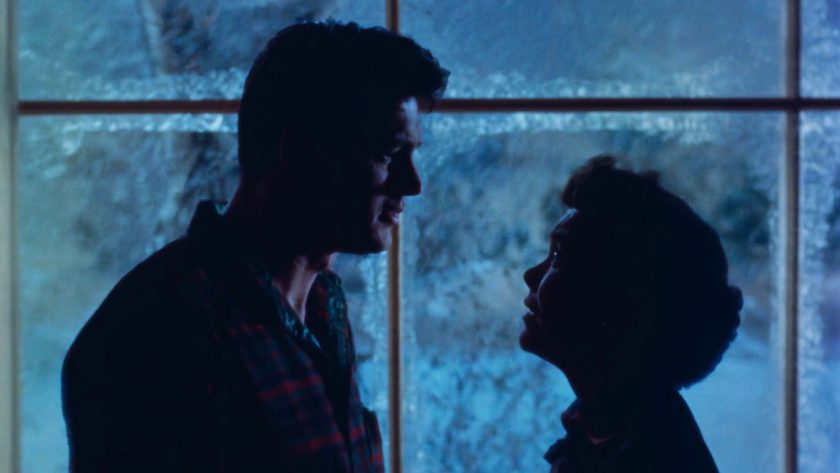Aryan Tauqeer discusses the position of the melodrama in the contemporary cinema landscape, the political history of the genre in Old Hollywood and how the films of Todd Haynes bridge the gap between the two by showing why the melodrama persists.
For as long as I’ve listened to Sonic Youth, my favourite song from Kim Gordon and Co.’s trailblazing alt rock group has been Tunic (Song for Karen), the second track on their sixth album, Goo. Like so many others, my introduction to their music was their hit single Kool Thing, a song that was propelled to such heights that just two years after Goo’s release, it was featured in Hal Hartley’s Simple Men, where the film’s three protagonists dance to it in a homage to Godard’s Bande à part. Biased though I may be, the band’s nine-album run from Confusion is Sex (Plus Kill Yr. Idols) to Dirty is perhaps my favourite of any group ever- and yet, even as I find myself regularly cycling through Daydream Nation and Evol, there’s a tangible grit to Goo that I can never seem to shake. Perhaps part of it has to do with the album’s concerns with Hollywood and the penetration of abyssal depths that success within it requires. Though not as easily applicable to that vein of critique as some of the other tracks on the album (particularly Tunic), one might be inclined to view Mildred Pierce as an equally embittered evocation of Sonic Youth’s distaste for conformities that the pressures of record labels might deem necessary. That much is evident in the fact that the album’s working title (and one that might have remained had Geffen Records not shared the band’s sense of humor) was Blowjob?, inspired by Raymond Pettibon’s rather unflattering caricature of Joan Crawford. Even though Goo’s cover is the iconic Pettibon sketch of Maureen Hindley and David Smith, Crawford never entirely disappeared from the album, instead manifesting in the song titled after the 1945 noir of the same name, for which she won her first Academy Award. The song casts out the name of Crawford’s character in an almost accusatory manner, less a chant than an exclamation set to the dissonant alternating guitar riffs that distinguishes the band from innumerable copycats. Adapted from James M. Cain’s novel of the same name and helmed by Casablanca director Michael Curtiz, Mildred Pierce stages a generational trail of tragedy that is in equal terms an achingly sincere character study and a cosmically cruel joke.
Amongst the many embellishments that render the film a lasting entry in the Old Hollywood canon, Mildred Pierce is also, chiefly, a melodrama. Set against the backdrop of a cavernous Modernist beach house in Malibu, the film is suffused with palpable loss that makes itself felt through the extremities of emotion within its performances. No matter the sharp contrasts in light and shadow made apparent through the construction of the beach house where Mildred is discovered in the midst of a murder plot by the police, there is no chiaroscuro that can obscure Crawford’s face wrenched in the momentary shock of betrayal. Though the film largely abides by the format of the noir and the retracing of a classic case of a crime of passion established by Cain’s novel, the film is in equal terms a familial tragedy that locates at its core differing womanhoods- that of Crawford’s, and that of her daughter Veda. Though Mildred Pierce does not necessarily interact with and repudiate constructs of gender and sexuality in the same manner as other Crawford pictures (namely, Johnny Guitar and Whatever Happened to Baby Jane?), it nevertheless engages with the lineage of two sub-genres that often co-existed within the same formal space- the “women’s picture” and the “weepie” (the latter of which roughly substituted for “melodrama”). As Mildred begins a career in waitressing after leaving her husband, she compartmentalizes her identity- this compartmentalization, however, is antithetical to the singularity of domesticity, in that it creates a rift between the titular matriarch and her daughters, neither of whom are aware of her mother’s career. When Veda eventually discovers a monogrammed uniform belonging to the restaurant that employs Mildred, she reacts with a revulsion that exemplifies the capacity for the melodrama as a narrative force, whereby every word exchanged between the two carries with it the threat of alienation from the other, and every action Mildred takes is subject to the sneering judgement of her daughter. It’s no wonder that such a dynamic should culminate in moonlit murder- what greater challenge to the bond between mother and daughter could be posed than one where either party could be liable for such an act?

Beyond purely a noir picture, (and no doubt beyond the often-misappropriated attribution of a “journeyman” that is so often levelled against Curtiz), then, Mildred Pierce is a work both elevated and stymied by its reliance on melodrama as the foundation of its drama. She is, paradoxically, a larger-than-life figure whittled away to a woman who abandons all conceit of an inner life by baring her soul in what resembles less a confession than a confessional, enforced by the police. Wracked though she may by tribulations and thrust onto a cycle of sacrifice and penance, Mildred nevertheless discovers a capacity for rejection of the responsibilities that ensnare her- deceived by Veda later on in the film, Mildred finally relinquishes the position of the self-sacrificing mother to return a fraction of the venom hurled her way by Veda, slapping her eldest daughter and parting from her by saying, in the steeliest of tones, to “Get out of here before I kill you”. To critics of the period, namely Thomas Pryor of The New York Times, the film embodied the widest leaps in the imagination demanded of the weepie-namely, the fact that a “level headed person like Mildred Pierce, who builds a fabulously successful chain of restaurants on practically nothing, could be so completely dominated by a selfish and grasping daughter, who spells trouble in capital letters”. Similarly, Douglas Sirk’s (whose oeuvre traffics far more frequently in such supposed leaps in logic than Curtiz’s) films were subject to similar criticisms in the 1960s, though Rainer Werner Fassbinder’s liberal homaging of All That Heaven Allows with Ali: Fear Eats the Soul somewhat rehabilitated the filmmaker’s cultural cache. Fassbinder, in particular, serves as something of a bridge for the generational transmission of, and reckoning with, the melodrama across generations and cultural contexts, owing to the lineage from Sirk to Fassbinder, and further still from Fassbinder to Todd Haynes and Francois Ozon.
It might strike one as something of a surprise, then, that in spite of advances in film scholarship on the melodrama as a genre and the capacity it offers for a uniquely expressive mode of cinema, a certain indignity still maligns the perception of the melodrama amongst cinema-going audiences. The pervasiveness of postmodern reflexivity and the perpetual, often ugly sheen of irony that coats their engagement with cinema is the most convenient suspect, but when even the most cannily reflexive of contemporary melodramas are brushed aside or dismissed as mere pastiche trafficking in either “emotional manipulation” (a term used so often and so indiscriminately that it hardly seems to hold any singular meaning), it becomes evident that a fundamental disconnect exists between the melodrama and its ostensible receptors. To suggest a “death” would be neither entirely accurate nor would not it account for the persistence of the melodrama in cinema outside of the Anglosphere, most relevantly in Indian cinema. Nevertheless, an opposition to melodrama on account of a jaded cinemagoing audience is irrefutable, and which manifests (in one of many ways) in the past year’s awards’ circuit, amongst both nominees and snubs. One need only observe the reaction to Bradley Cooper’s Maestro to ascertain what an audience response to a new Minnelli or Lubitsch might look like-not to suggest that the film exists on the same plane as Minelli’s A Star is Born (though Cooper’s debut feature of the same name comes close), but merely to point out that the same fluidity of form in service of melodrama that the films of the Old Hollywood masters is present (though perhaps more jarringly) in Maestro.

Goo, then, is all the more fitting today as an evocation of all that is jaded and retributive at moments of immense cultural upheaval, something that locates itself most potently in Tunic, which reckons with the legacy of The Carpenters’ and its frontwoman, Karen Carpenter, who died prematurely from complications related to anorexia. Gordon croons with a soothing tenor that betrays the song’s suffocating overtures, and with droll and bitter irony, evokes the sun-kissed airiness of the Carpenters’ own music in a sinister fashion. Yet, there isn’t a hint of snark in Gordon’s lyricism, which instead constructs a desperate cycle of a desire for approval- from Karen’s mother and from the industry at large- that leads to a denial of all the damage it wreaks until, distressingly, there’s nothing left. Listening to Tunic, one might recall the manner in which Todd Haynes’ Superstar reckoned with Carpenter’s anorexia through an experimental mode that, much like Gordon’s own evocation of fundamental Americana in the form of the Carpenters’ music, uses the all-American cultural import of the Barbie brand to pop culture’s flattening and banalization of its most precious icons. Like Tunic, Haynes’ film traffics in images of deceitful bliss and delusion, but avoids entirely the notion of the ironic or the glib, instead operating in a hermetically sealed world of isolation that is nonetheless always attempting to locate, in the midst of postmodern miasma, some faint trace of the “real” Karen Carpenter, and what she could have possibly gone through.
The sincerity embedded within Haynes’ oeuvre, in turn, is inextricable from the director’s reckoning with the melodrama and its position in the 21st century- that is, the realm of the postmodern. Perhaps the most thuddingly obvious example is Far from Heaven, a film whose very title immediately announces itself as being in conversation with Sirk’s masterwork All That Heaven Allows. Like Sirk, Haynes found something of a muse for his stories of strife and alienation in American suburbia, with Julianne Moore taking on a role that is virtually indistinguishable from the kind that Jane Wyman might have been cast in. Though the film draws upon the intersectional prejudices that Sirk’s Imitation of Life examined- chiefly, that of interracial relationships- it is distinguished altogether from what might otherwise resemble pure pastiche by Haynes’ keen attention to the capacity of the melodrama for the expression of a socio-political impetus, albeit without the baggage of the didactic. Observe, for instance, how unadorned and absent of knowing reflexivity the comments made by gardener Raymond Deagan (Dennis Haysbert) to Sirkian heroine Cathy Whitaker (Julianne Moore) at an art exhibit are. In suggesting that abstract art is a continuation, and not a repudiation, of traditions of European devotional art, Raymond identifies himself as a continuation of the Sirkian love interest, characterized by a tenderness betrayed by a stoic disposition that is as much a construct of the social conditions surrounding it as Sirk’s films themselves. Yet, despite the film’s clear construction in the shadow of Sirk, in everything from its colour grading to its camera movements, Haynes establishes the tangible artifice of proscenium that distinguishes 50s melodrama as a conduit for reckoning with social conditions that Sirk’s film’s never quite (at least explicitly) addressed- namely, queerness and homosexual repression. When Cathy walks in on her husband Frank (Dennis Quaid) in the middle of a tryst with another man, her evident shock is mirrored in the way a shimmer of viridescent light envelops the two lovers, in a sharp contrast to the dull green that barely seems to escape its source of emanation in the gay bars visited by Frank later in the film. As John Halliday so acutely observes in Sirk on Sirk, the spatial qualities of the melodrama are distinguished by the fact that “things – objects in the mise-en-scène, including mirrors – are no longer ciphers, vivid stylistic flourishes without certain significance; they embody social critique or a self-reflexive awareness of the conditions of representation”.
More pertinent still to the notion of the contemporary melodrama is May December, a film whose dissemination via Netflix led it to find perhaps the largest audience for a Haynes film ever, but which also does it a disservice by dumping the film into a flattened landscape of streaming “content”, amongst which true crime documentaries and ripped-from-the-headlines recreations that resemble less films than they do filmed stage plays (see: Dahmer) occupy a significant share of audiences’ increasingly limited attention spans. It is no wonder, then, that when the film hit the eternal revolving door of the “Recommended for you” aisle, it found an audience programmed to read the film as a dramatization of the Mary Kay Letourneau case, where a 34-year old teacher was imprisoned for a little over 7 years for the statutory rape of her 12-year old student, Vili Fualaau. No doubt the film draws heavily upon the Letourneau scandal- the specifics of the dynamic between Gracie (Julianne Moore) and Joe (Charles Melton) are eerily similar to its real-life precedent, and a climactic argument between the married couple utilizes dialogue lifted almost word-for-word from an interview conducted in 2018. It seems difficult, then, to fault readings of the film as akin to a true crime serial, especially considering the recurring use of a musical motif from Michel Legrand’s score for The Go-Between that recalls a soap opera in the same way as the plasticity of its images do. Even the film’s central narrative conceit- that of TV actress Elizabeth (Natalie Portman) seeking to immerse herself in the world of her source material for a role- suggest a postmodern performativity that uses the sincerity of the televised melodrama- as so many of Fassbinder’s television productions fit into the mold of- as a foundation for an operatic joke that the audience is in on. When the film’s familiar musical cue plays over Gracie dramatically declaring that she needs more hotdogs, we are lulled into a false sense of security that assures us that May December is mere artifice that we need not implicate ourselves within, and instead observe it through the lens of “camp”.

Yet, when the same cues are distorted and repeated over Elizabeth assuring Joe, a victim of childhood sexual abuse still in a long-term relationship with his abuser, that this is “simply what adults do”, there is no attempt to distanciate through irony, nor does the film signal to the audience the horrifically ironic implications of Elizabeth’s offhand remark- instead, the outsized emotional safety valve that is Melton’s performance reckons directly with the 20+ years he has lost under Gracie’s watchful eye as an Oedipal figure. Looming over Elizabeth and Gracie, Joe seems not all that different from Rock Hudson’s character in All That Heaven Allows who, like Joe, possesses an affinity for gardening, and possesses a meticulous knowledge of what he grows. The difference, of course, is that the conviction that enables Sirk’s love interests to live outside- or at least freely within- the confines of polite society is nowhere to be seen in Joe, who is entrapped within the limbo between adolescence and adulthood. Even when the film seems to lend itself to the outwardly amusing in the form of situations that wouldn’t look out of place in a Farrelly Bros comedy, such as when Joe tries a joint for the first time with his teenage son, it locates in its melodramatic performances the emotional fallout that the violence of representation- particularly that of media images- does to someone, and in doing so navigates the landscape of upended sexual politics and fetishistic voyeurism that the film is inextricably embedded in, as a result of its distribution strategy. The mirrors of May December are representational, to be sure, but they are also, crucially, simply and banally mirrors, which force audiences to reckon with their implication in the ongoing construction of narratives of exploitation and celebrity, but without the veneer of conscious intellectualization that characterizes nakedly postmodern commentary. Instead, the leveraging of melodrama as a conduit for us to identify with Joe’s position as voyeur and exploited necessitates us to engage with the tangibly felt emotions of its characters, even when they may not align with our moral compasses. In watching May December, we are sharply displaced from the kitsch comforts of “camp” and, not unlike Joe, provoked into emotional terrain that we are unsure how to deal with- in fact, we may not want to deal with it at all, which is perhaps telling as to how the film was ultimately situated in the discourses of true crime and the ethics of representation.
In Laura Mulvey’s Visual and Other Pleasures, she discusses at length the position of the melodrama as a genre that provides an expressive conduit for femininity on film, in a manner that provides a conduit for “probing the pent-up emotion, bitterness and disillusion well known to women”. Far from being a wholly reductive mode of expression that relies on cheap sentimentality as a panacea for fundamental societal ills- as it is so often represented through its proliferation in television- the melodrama at its most unadulterated gives rise to all that is most sublimated and repressed within ourselves. The reflexive melodramas of a filmmaker as attentive to the history of the genre as Todd Haynes, in turn, complicates these tensions by situating them within the wider political encounters that we would like to believe are so distant from our basest impulses. To regard the melodrama as instrumental to the transformative potency of cinema is not to resuscitate and rehabilitate melodramas as totally divorced from escapism or fantasy- rather, it is by acknowledging the accumulation of excess in mise en scène as the process of constructing a fantasy that we, as audiences, are invited to occupy these spaces and examine the oh-so-delicate rifts and seams holding these fantastical dioramas together. Of course, this capacity for the melodrama (at least in the West) to trigger such reflexivity has not been exhausted entirely, as Alexander Payne’s The Holdovers, Sean Durkin’s The Iron Claw and Andrew Haigh’s All of Us Strangers demonstrate so effectively- like any self-respecting melodrama, both films converse with contemporary political landscapes through pushing against reactionary impositions of right-wing machismo, instead reclaiming the terrain of masculine expression from such forces by staging grand displays of compassion in the face of interminable loss. Yet, I cannot help but feel that in order for the melodrama to be truly cultivated once again into the essence of the multiplex, it must aim beyond the spheres of nostalgia and memory to reckon with the ways in which exponentially worsening political and economic pressures- not least from the incumbent Conservative government- continue to necessitate art that is retributive in nature, not least through the explosive expressions of emotion that the melodrama allows for.





Veneer adds a touch of elegance and sophistication to any interior design project. Norstone Inc
Choosing the right blade ensures smooth and accurate cuts every time.Norstone Inc